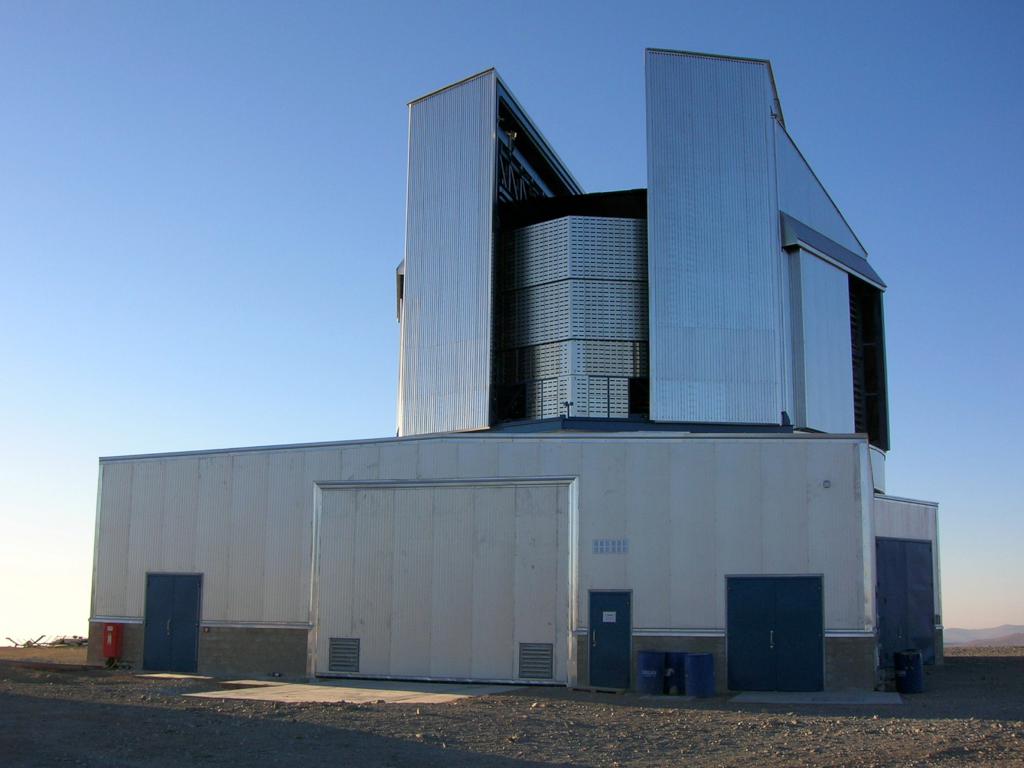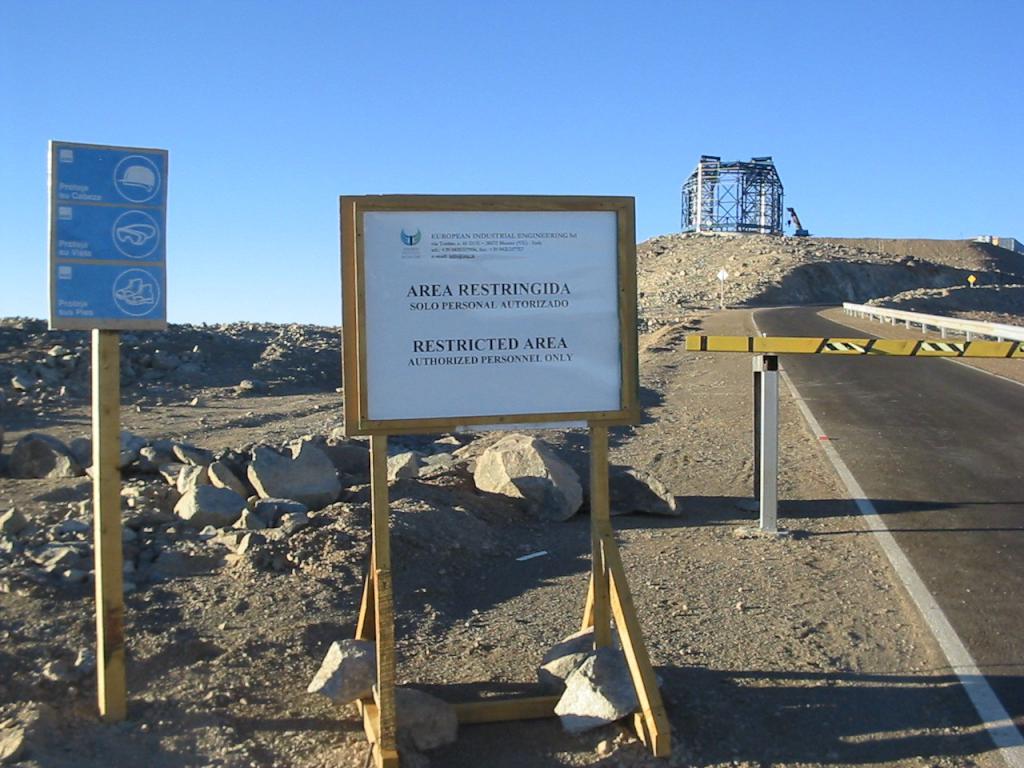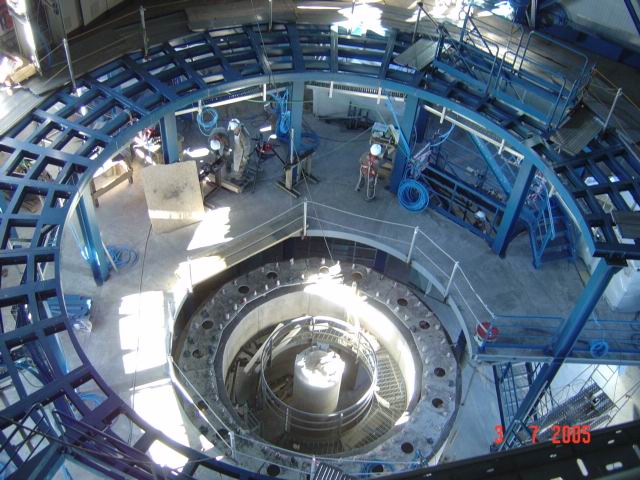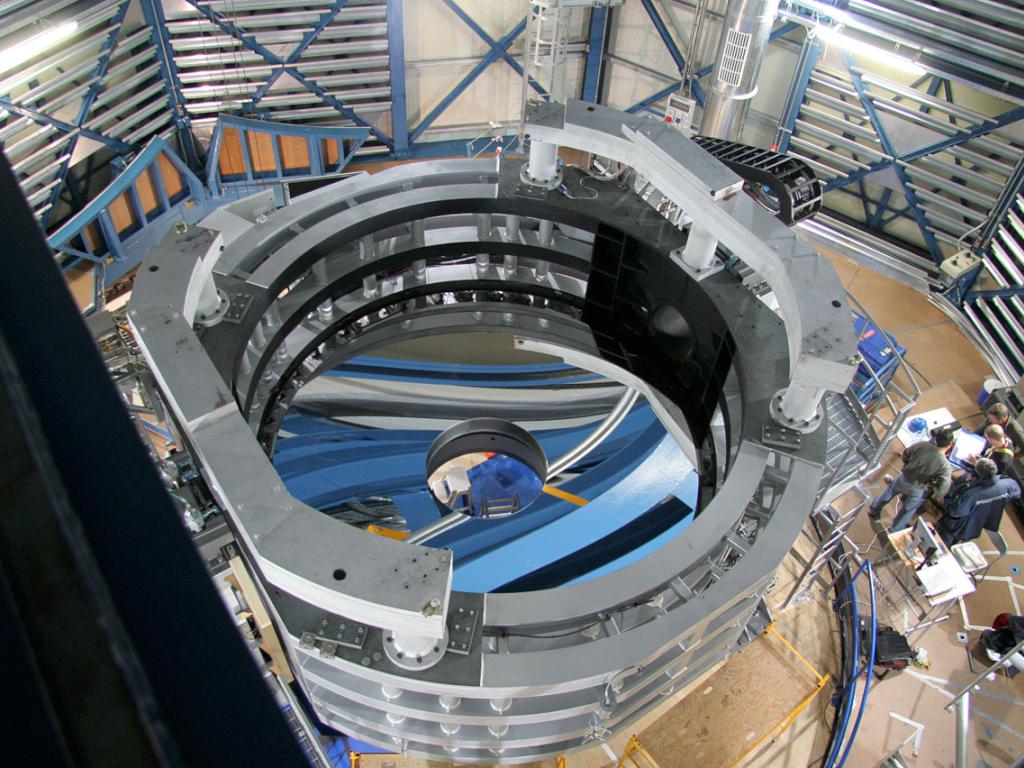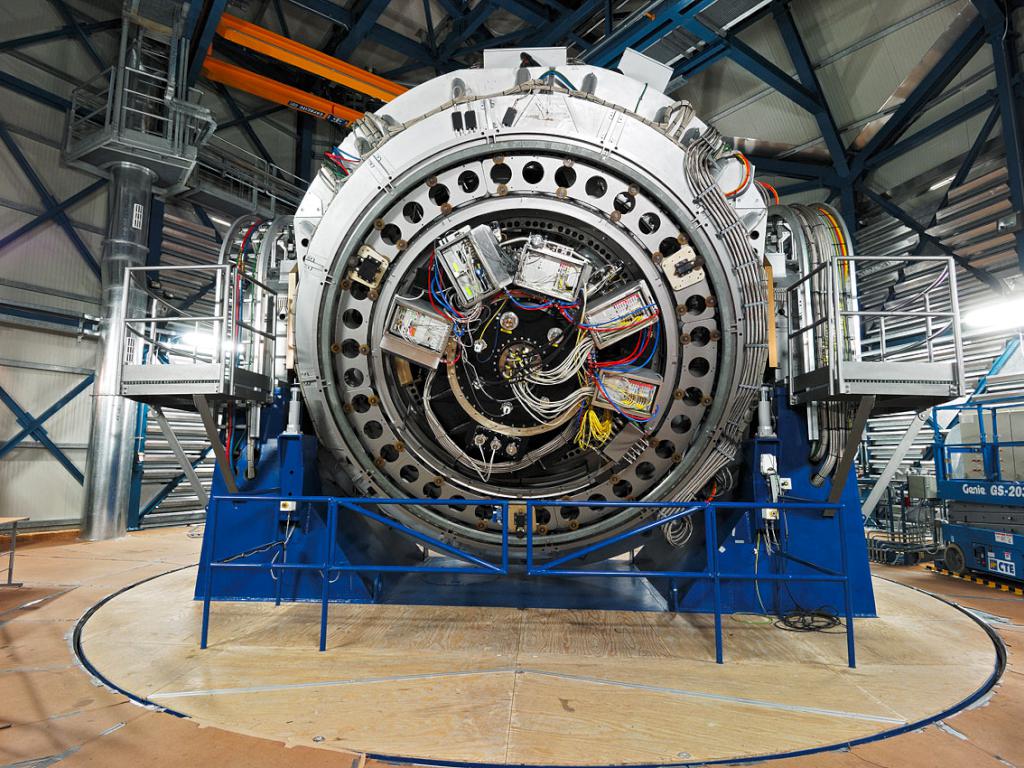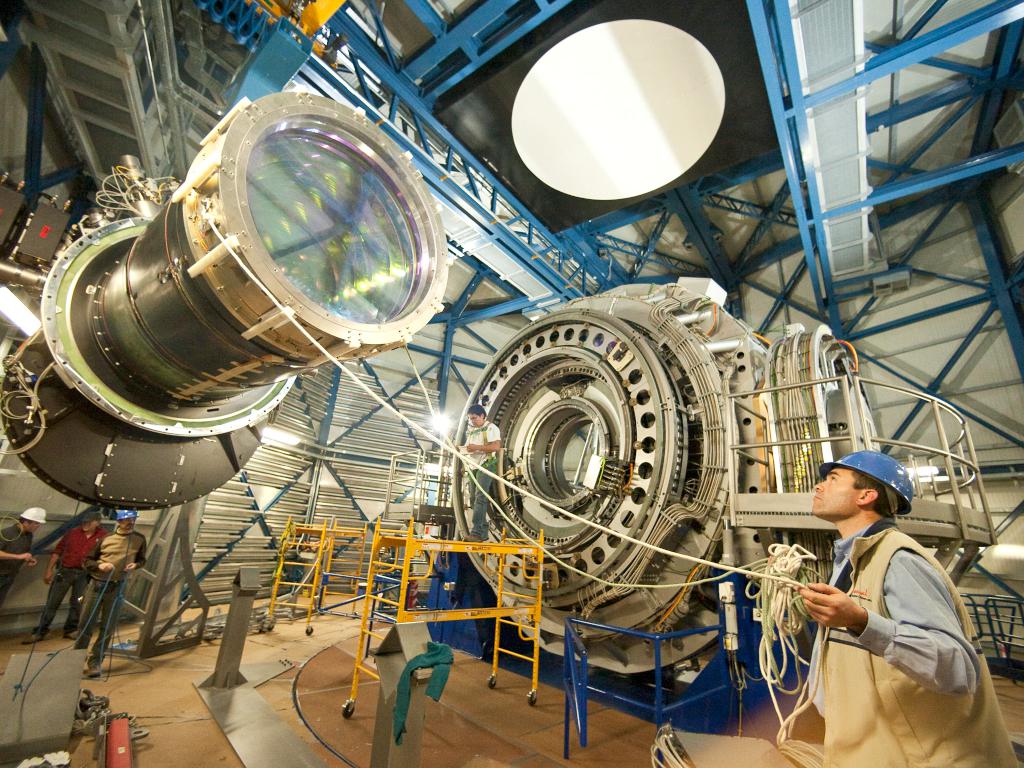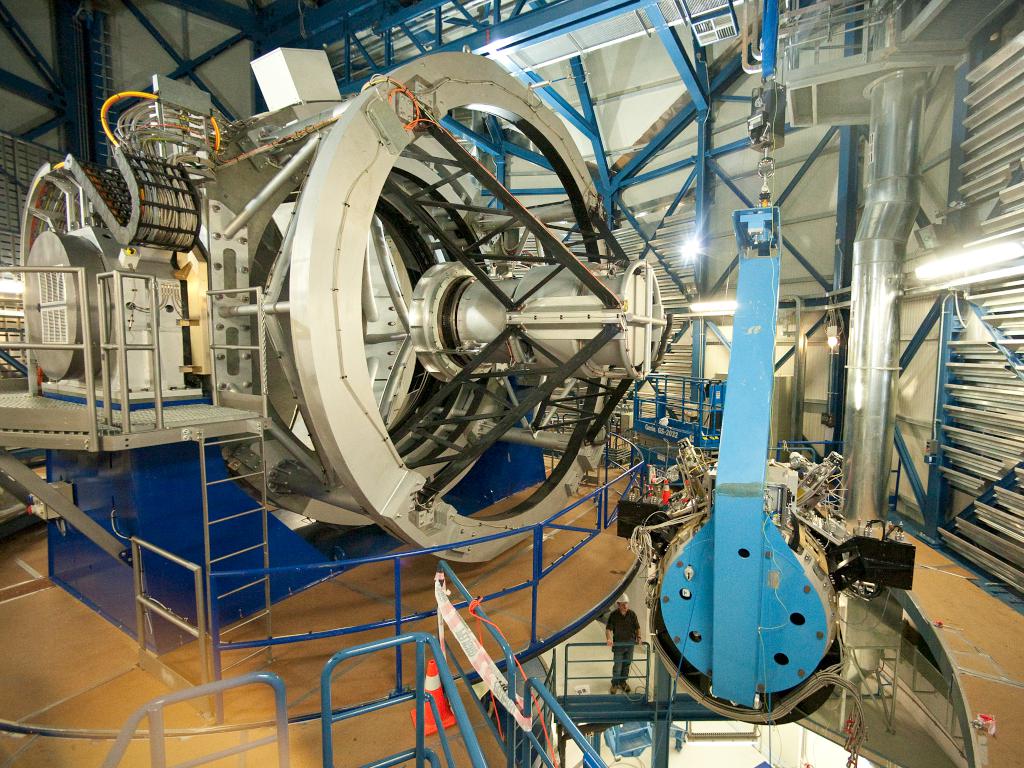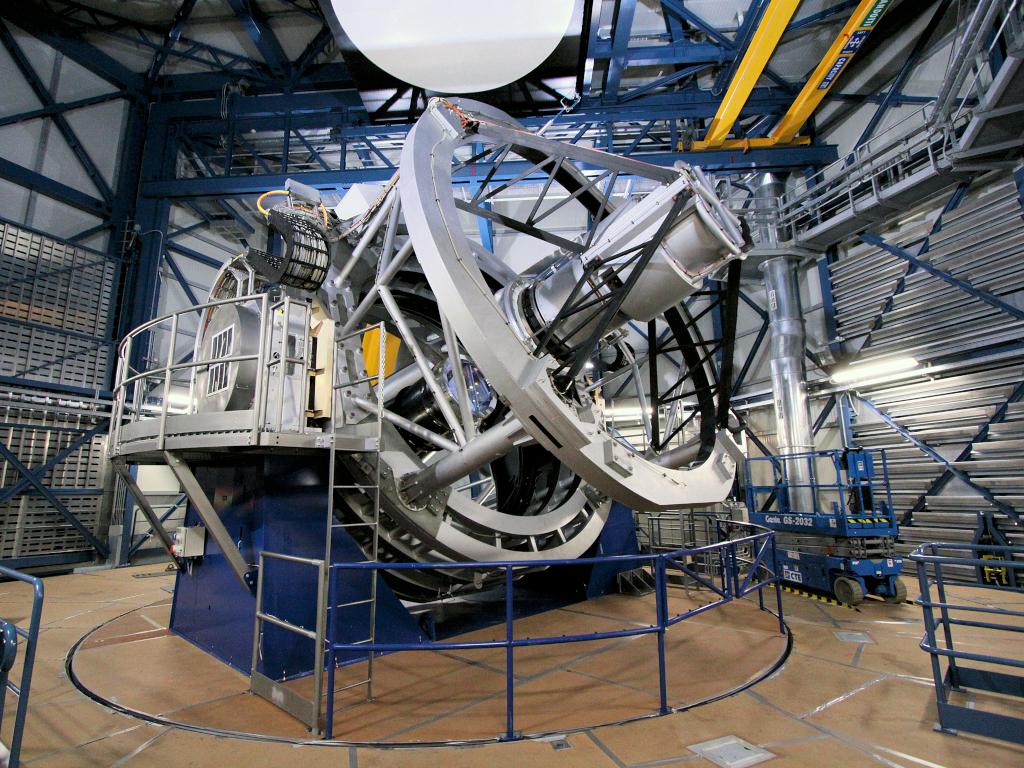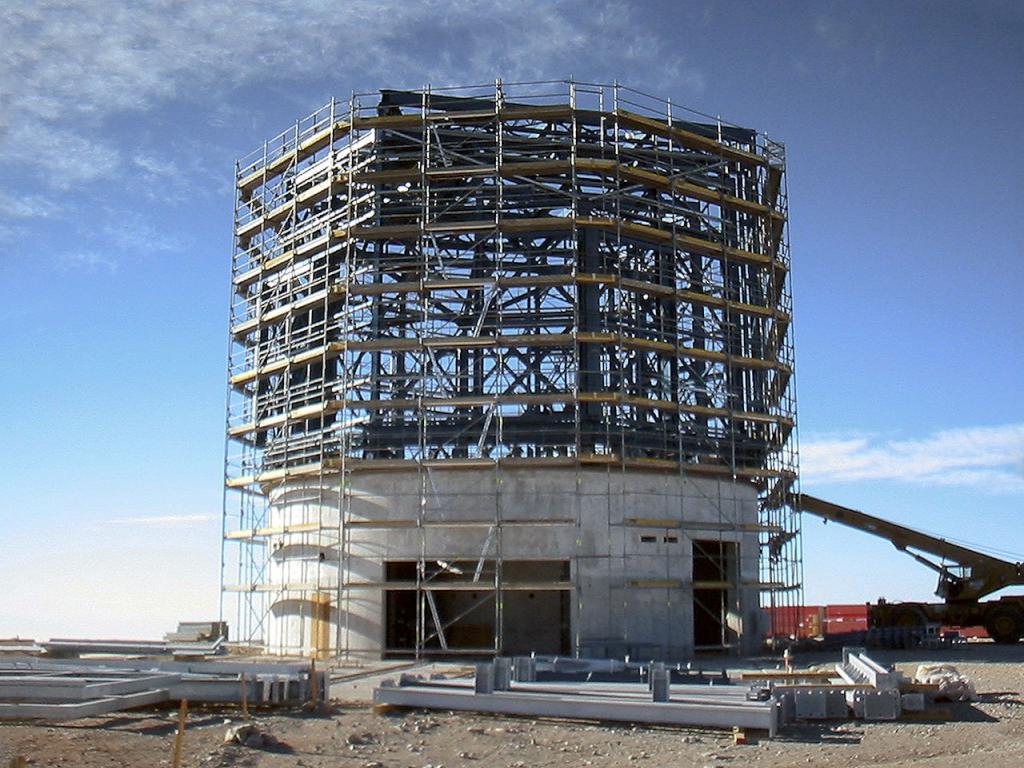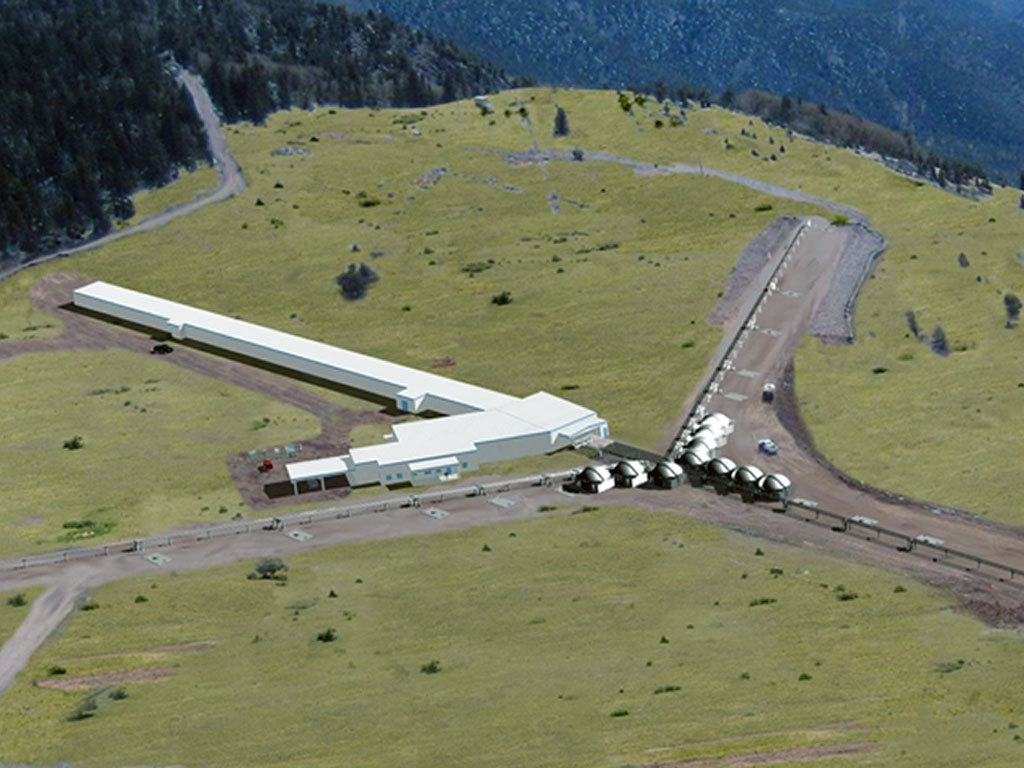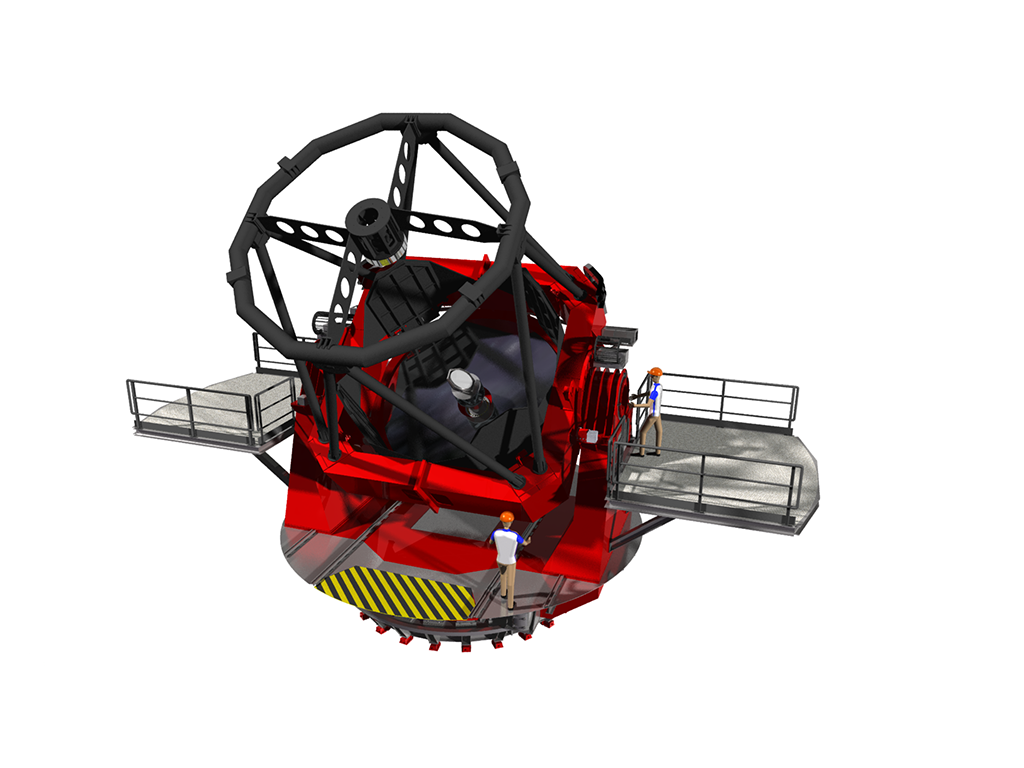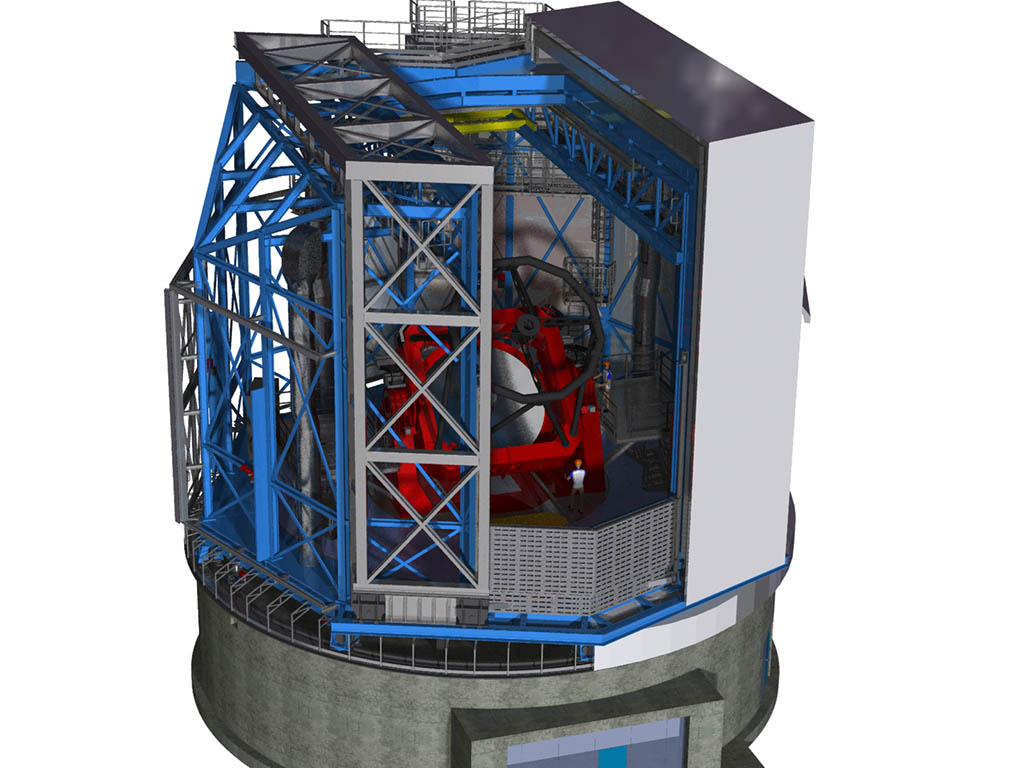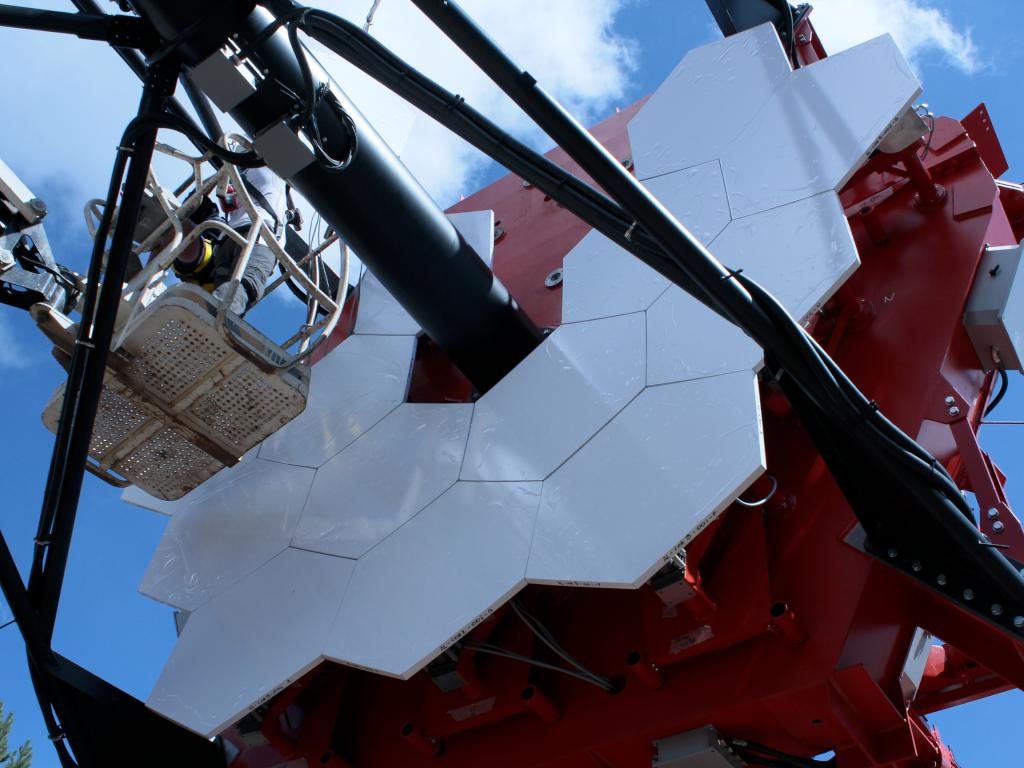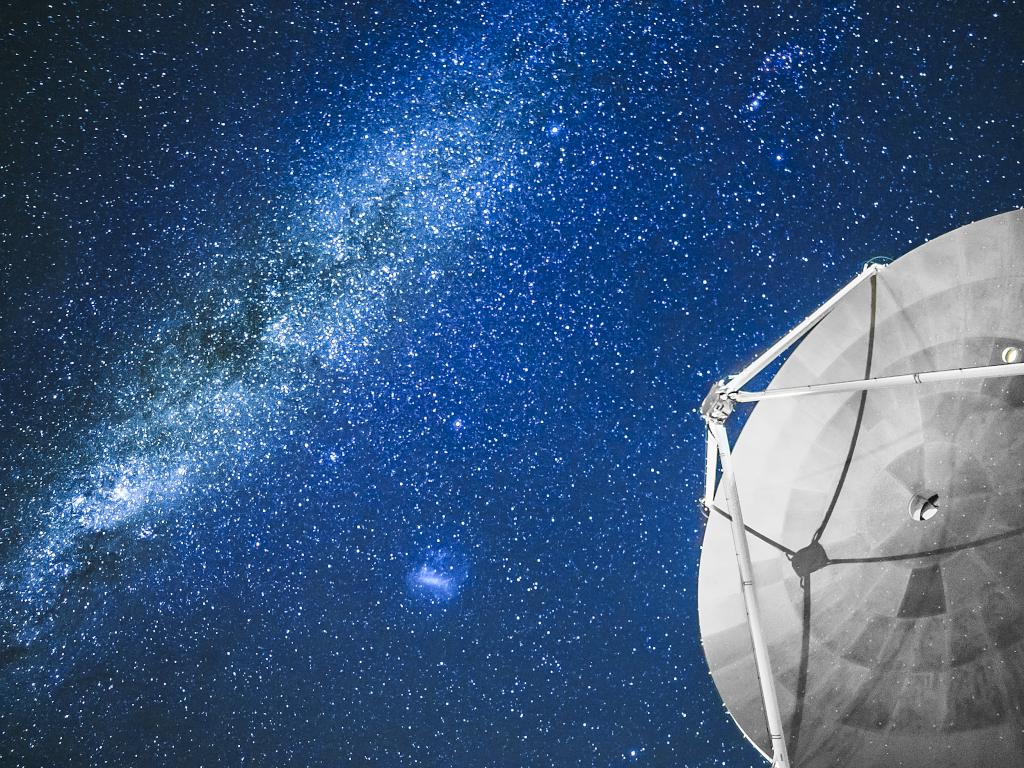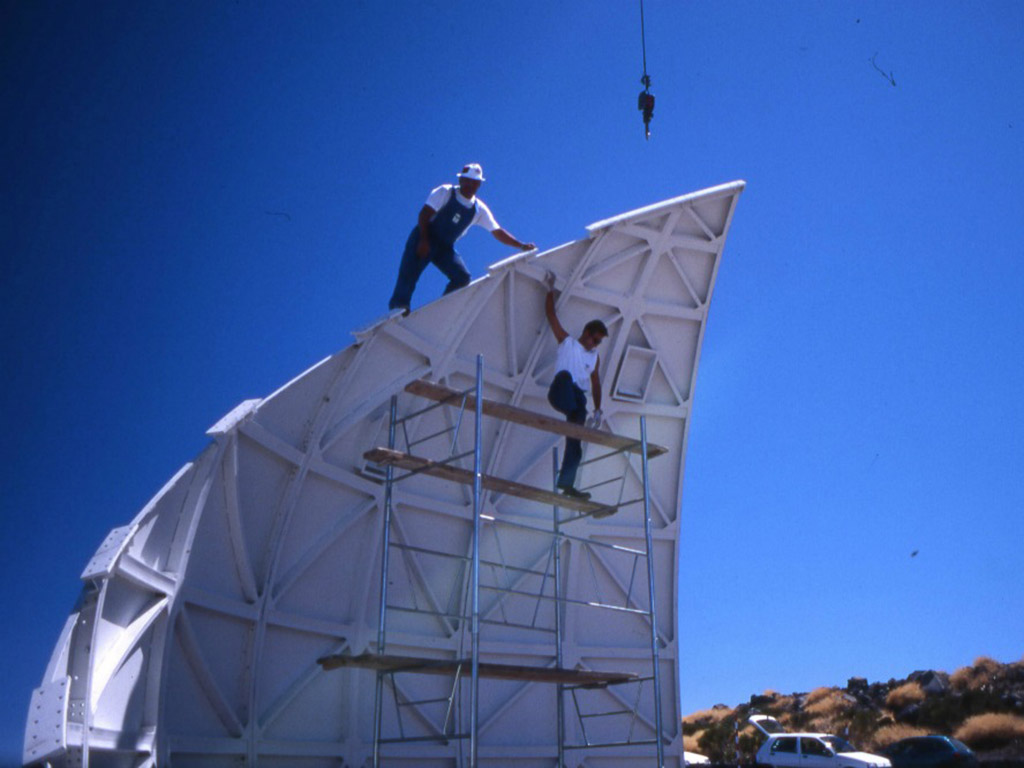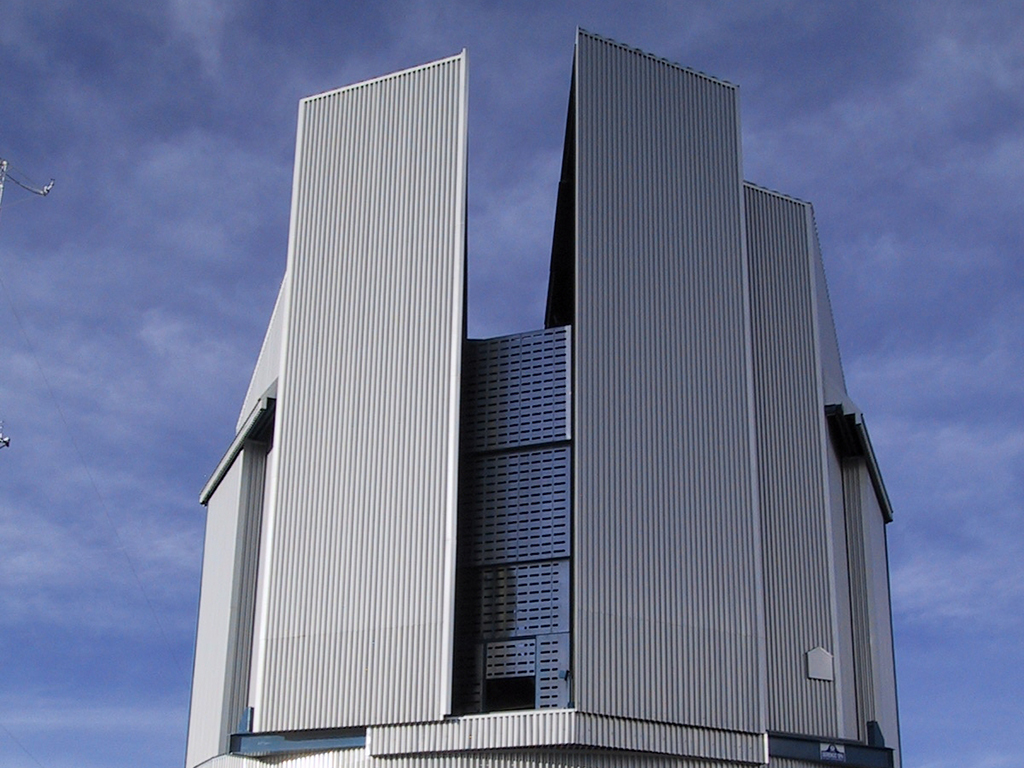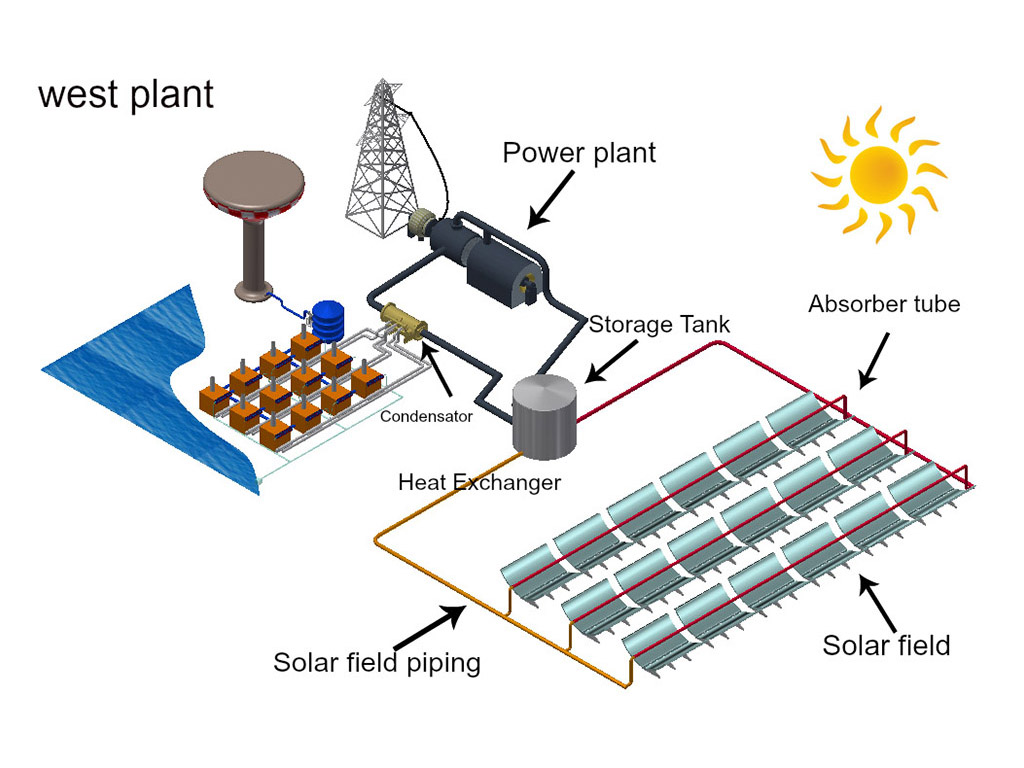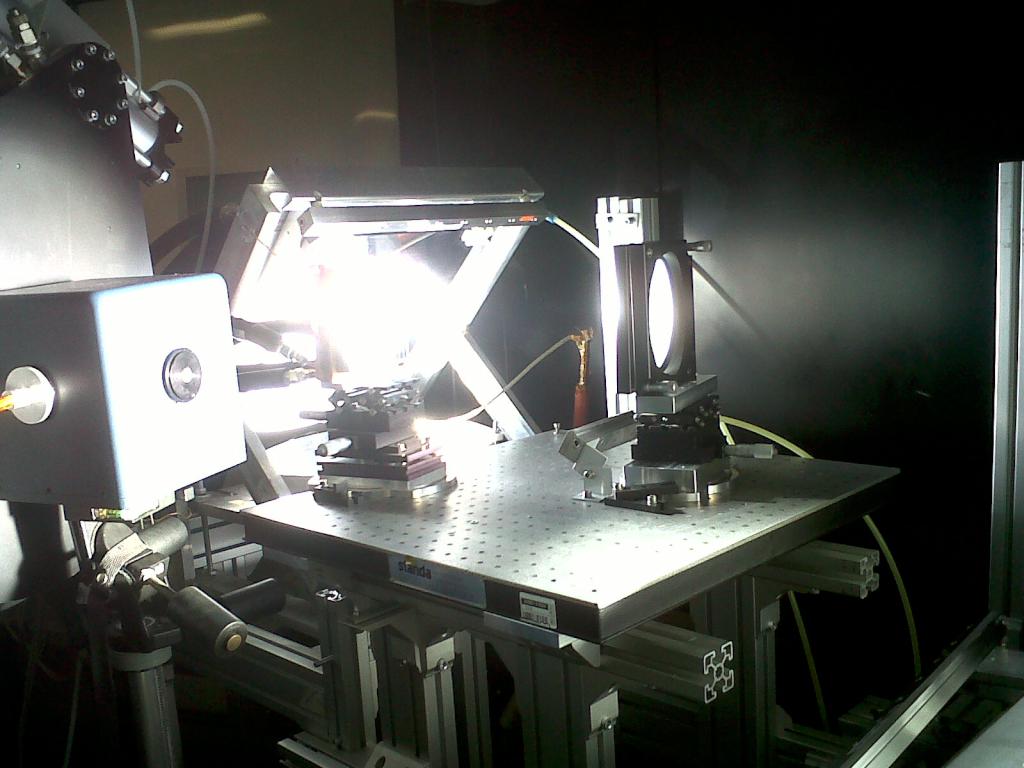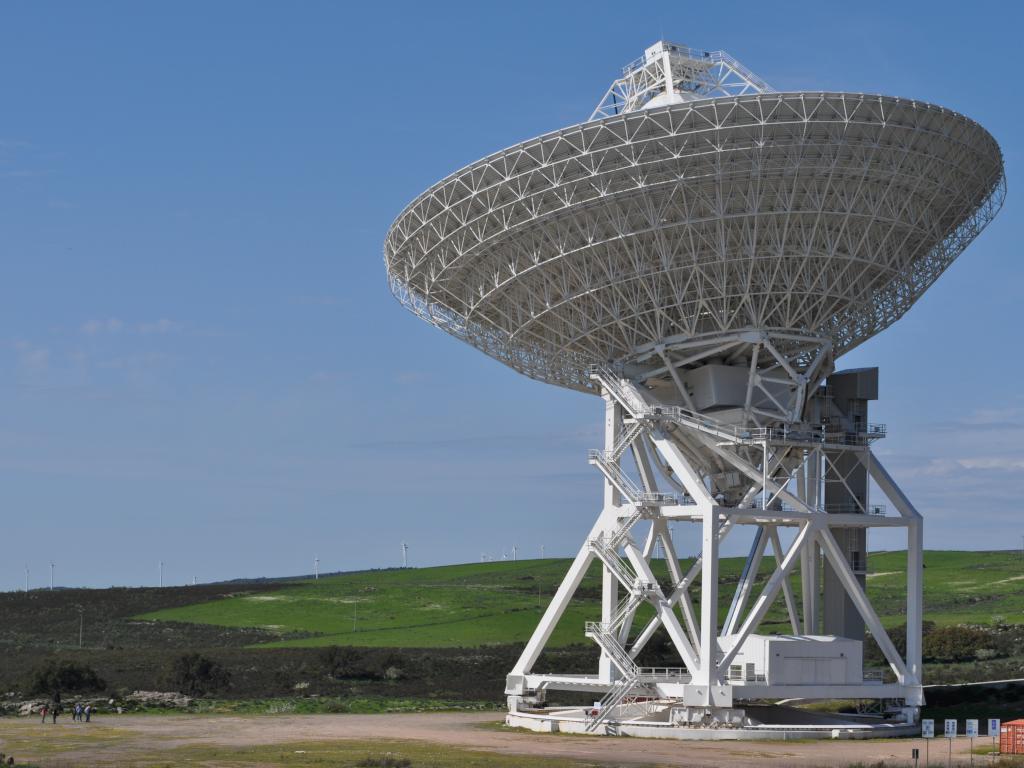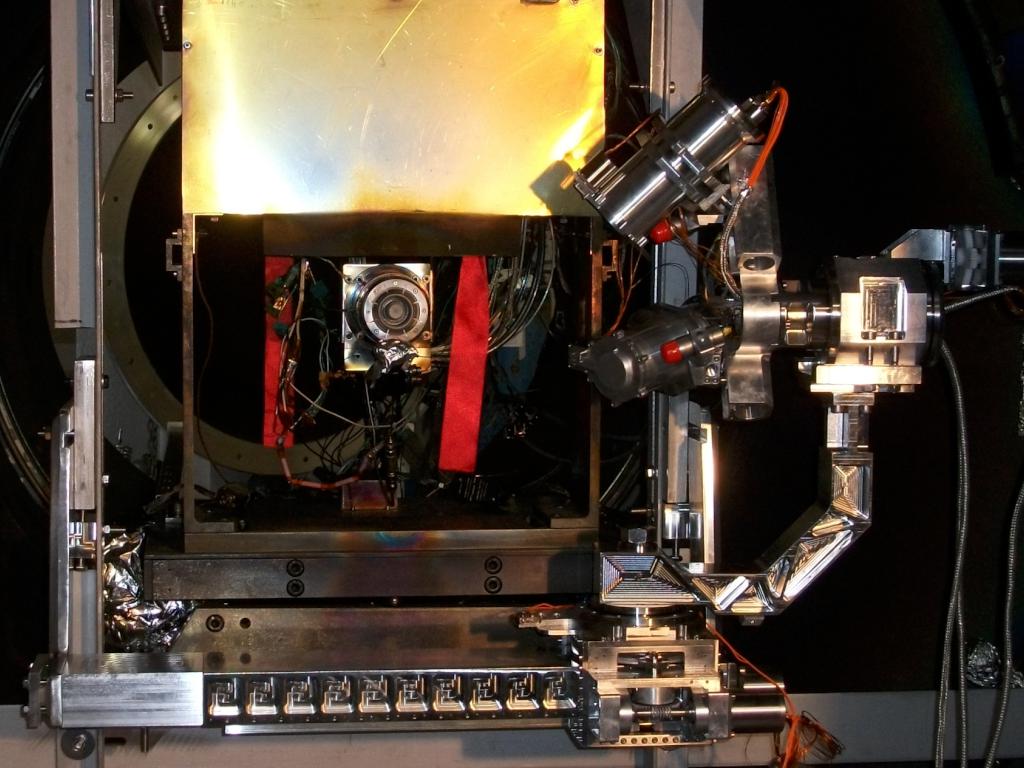VISTA - Visible and Infrared Survey Telescope
Site: Paranal Osservatory, Atacama Desert - Chile
State: completed
Activities:
Detail Design, Manufacturing, Pre-Assembly in Europe, Packing &Transport, Erection on Site, Commissioning and Testing of Rotating and Auxiliary Building
Date: 2003-2006
Client: PPARC – Edimburgh UK
Category: astronomy
Credits: ESO Courtesy - EIE GROUP
The VISTA Telescope - Rotating Building
Overview:
The VISTA (Visible and Infrared Survey Telescope) telescope is an alt-azimuthal wide-field optical instrument for survey observations at infrared wavelengths. It is installed at 2518m of altitude at Cerro Paranal – Chile, astronomical Observatory and in 2002 it was “donated” as an in-kind contribution to ESO (European Southern Observatory), by the Science and Technology Facilities Council, on behalf of the VISTA Consortium (made by 18 Universities in the United Kingdom), as part of UK’s accession agreement.
The VST, which main scientific goal is resolving some of the most exciting issues in modern Astrophysics, from the nature of Dark Matter to the threat of near-Earth asteroids, is provided with a 4.10m diameter primary mirror, with a 1.24m diameter secondary mirror and with the Vista InfraRed Camera (VIRCAM). This powerful camera, with its 3 tons of weight and a total of 67 million pixels, can capture sections of sky about 10 times the area of the full Moon. A computer-controlled active optics system controls the shape of the M1 and the position of the M2 keeping them in perfect position all the time.
Characteristics of the VISTA Rotating Building:
The Rotating Building housing the VISTA telescope, has an octagonal shape and it has been designed to protect the telescope against adverse weather conditions, dust, lightning and to preserve its thermal environment, when in closed configuration. For this reason both roof and facades have been covered with thermal insulating panels and external aluminum sheets.
The fixed base of the enclosure supports the rotating steel dome. Two sliding form the door slit and allow the telescope a free field of view, while a wind shield, the windscreen, made by air flow permeable panels, can be vertically deployed according to the needs, following the telescope movements and protecting it from strong winds and dust. In addition, along the enclosure perimeter there are three ventilation doors which are provided with fixed flaps consenting air to flow off the enclosure.
The enclosure housing the VISTA telescope is also provided with:
• Locking pins;
• Thermal control system;
• Plant installations;
• Lighting System;
• HVAC System;
• Smoke detection and fire alarm systems;
• Anti-seismic Systems ;
• Control System;
EIE has also designed and fabricated the Auxiliary Building of the VISTA telescope.
It is a thermally insulated steel structure, provided with a white room for the control of the air contamination and destined to the aluminizing process of the primary mirror (M1).
Science with VISTA:
The observations that VISTA will perform and support the research in many different astronomical areas. The main scientific goal for the VISTA telescope consists in a systematic mapping of the Southern sky trhough survey observations.
Thanks to the observations that VISTA performs since 2010, the astronomers have been able to investigate small portions of sky, repeatedly at different times to detect extremely faint objects, to study the Brown Dwarf phenomena, to get a better understanding about Dark matter, remote Quasars, Galaxy formation and Galaxy Clusters.
Using VISTA data, the scientific community will be able to create a three-dimensional map of about 5% of the entire observable Universe.
Link ESO’s VISTA web page:
https://www.eso.org/public/italy/teles-instr/surveytelescopes/vista/
